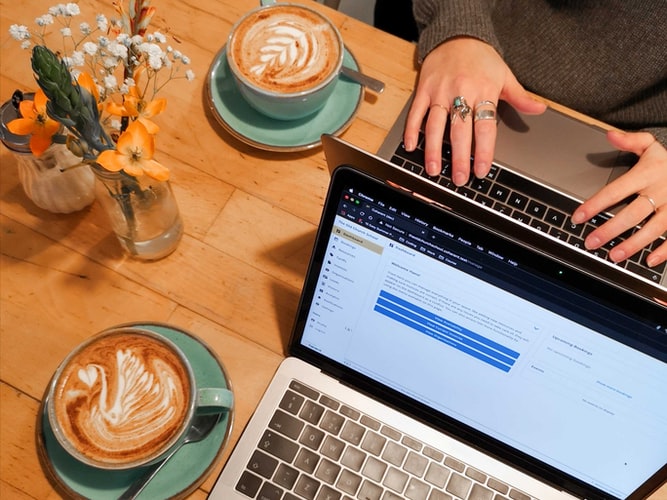
As many of the population attempt to find their way through the new normal of working from home, teachers and pupils across the country are adapting to a new way of learning. Recently, I attended a webinar hosted by Mark Steed, Principal at Kellett British International School in Hong Kong, in which he spoke about his experience leading a school through unexpected closure, the impact it had on pupil, parent and staff wellbeing and what his school did in an attempt to boost morale and wellbeing during these unprecedented times. The situation currently faced by schools has meant that pupils, staff and parents have had to adapt their teaching and learning in a number of creative and innovative ways to overcome barriers. Below I have summarised the key points from the webinar, including ideas for tackling issues arising around maintaining positive wellbeing when working remotely.
Before the full lockdown came into place in Hong Kong, teachers at the school were still able to go in. They continued to hold assemblies based around wellbeing via video link and hosted musical and creative events online to ensure pupils still had contact with each other, such as their ‘Feel Good Fridays’ in which members of staff would come together to produce a song or something creative to showcase to pupils online and increase engagement and morale.
One of the key issues brought up by primary pupils as affecting their wellbeing was not being able to interact with one another as they usually would at school. To overcome this, primary teachers facilitated daily ‘circle time’ via Zoom with their classes, allowing the whole class to interact with one another, whilst for secondary pupils to stay connected and creative, online open-mic competitions were held and a ‘positivity playlist’ was created on Spotify in which contributors had to identify why they had added their chosen song.
After schools were closed to teachers, secondary teachers start to teach live from home via video link and primary teachers created online lessons for their pupils. Although this may be appropriate for older children, in the UK, National Education Union guidance has warned that online lessons are not desirable for primary children as the teacher-pupil interaction is not easily replicated and video-calling should be used in exceptional circumstance for the parent/carer only. Teachers also found that preparing lessons for video is much more time consuming than preparing for normal lessons; teachers working at home should only be carrying out a reasonable workload.
To submit work and questions, pupils used apps such as Padlet, a virtual post-it note system that lets students share ideas, and Flipgrid, which lets teachers and students create short videos to share. Staff accepted that the same routines would not be able to take place and restructured the timetable with shorter lessons and opportunities to take breaks from home learning. Later on during the lockdown, laptops or tablets were provided to those children who did not have access to them. Where this is not possible, it is important to consider setting tasks which do not require internet access.
Many teachers have had concerns about how to continue safeguarding whilst children are isolating at home. At Kellett International School, after much consideration, vulnerable children were given 1-1 Zoom sessions and opportunities for counselling over Zoom. To overcome the risks relating to GDPR and safeguarding associated with using this method, these were recorded with parental permission; it is important to consider that these sessions were only undertaken where the benefits of contacting pupils outweighed the risks of having no contact with vulnerable pupils.
A wellbeing page was set up on the school’s website and during the lockdown, one teacher uploaded weekly videos featuring a variety of mindfulness exercises pupils could complete at home, examples of which can be found here. Pupils were also asked to write letters of gratitude to their teachers to improve student and teacher wellbeing and strengthen these relationships. In addition, the school sent out weekly wellbeing surveys to both pupils and teachers, in which, amongst other questions, they rated themselves on a scale of 1-10 for wellbeing. Children and staff who had rated themselves low were then contacted to ensure that everything possible was being done to support them.
One of the key findings from the whole experience, according to Steed, was that it benefitted children who are school refusers, or those who cannot attend school due to long term illness or medical conditions. These pupils were found to make better progress during the lockdown, as they were being delivered a full package of home learning and had access to live teaching, rather than having work sent home for them at the end of the day. This is an interesting point to consider upon school reopening and could impact the future of how these children’s needs are addressed.
It is well known that parental engagement is key element in pupils’ attainment and progress. To keep parents reassured and up to date, they were sent newsletters weekly featuring wellbeing and mindfulness tips and parent-teacher video calls were held. In the future, the school plan to implement a yearly ‘home-learning day’ or ‘drill’ so that pupils and parents are able to practice the processes such as logging in to virtual learning platforms and use of technology, if a situation such as this is ever to arise again.
There is no doubt that a number of invaluable lessons have been learnt in the past few weeks. With the rise of online learning platforms and other EdTech, coronavirus could be reshaping education as we know it. The past few weeks have certainly tested the resilience of staff and pupils alike and highlighted the admirable ability of education professionals to think on their feet and rise to a challenge.